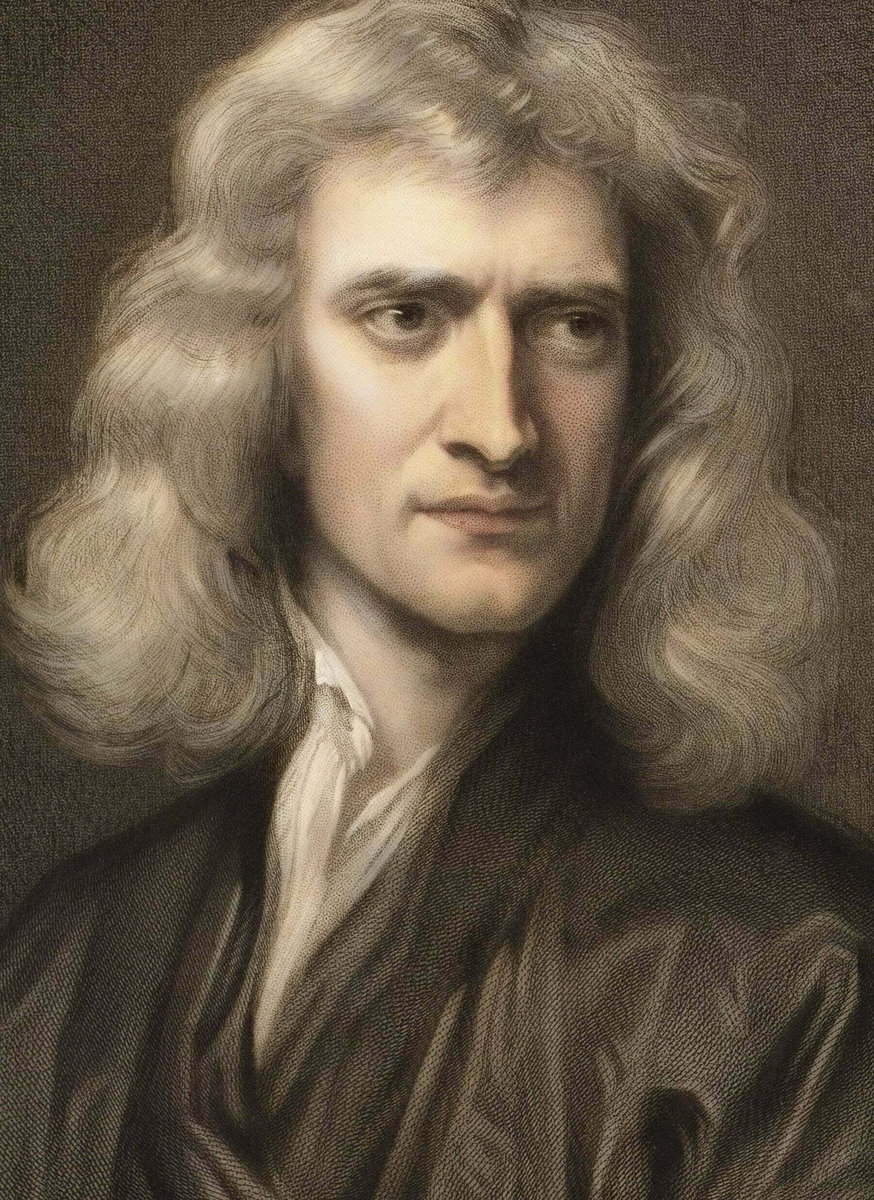Was it the theory of relativity or the law of universal gravitation?
It must be noted that Einstein initially did not show much enthusiasm for Minkowski’s geometric idea: mathematicians often play with the laws of physics… However, his attitude changed when he encountered a new problem that arose from his own success. The theory of relativity, after overcoming the “asymmetry” of Maxwell’s electrodynamics, clashed with Newton’s law of gravitation.
Before we delve into this conflict, let’s take a bird’s-eye view of the development of the theory of relativity, which encompasses the entire history of fundamental physics. To do so, we will follow the familiar Einsteinian framework:
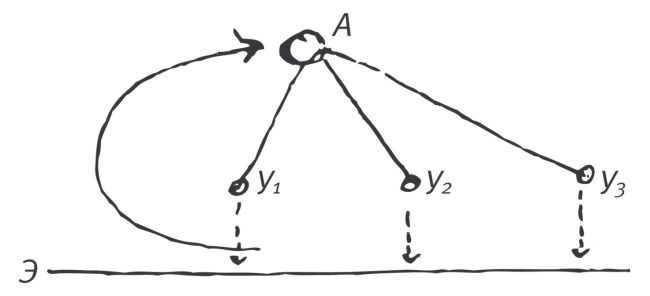
In this scenario, the observed reality E can be described as “unsuccessful attempts to detect the movement of the Earth in relation to the ‘light-carrying medium’.” Through a profound surge of intuition, Einstein elevated the peculiar outcomes of individual, skillfully crafted experiments to a fundamental axiom A – the constancy of the speed of light. He also elevated Galileo’s principle of relativity to the same level, discarding the impractical axiom regarding the existence of the ether. These two axioms paved the way for a novel understanding of simultaneity, the “peculiar” law of velocity addition, and other propositions U that could be experimentally tested.
Everything is straightforward and reasonable, with the exception of intuition, as Einstein once remarked: “Ideas can never be derived from experience in a completely logical manner… Without deviating from logic, progress is impossible.” One must challenge the logic of the existing theory and possess great mental fortitude to consistently derive logical conclusions from the seemingly “illogical” axioms, verifying them against empirical evidence, and uncovering the rationale behind the new theory.
The drama surrounding the authorship of the theory of relativity was characterized by a unique combination of logic and intuition. In 1905, a 26-year-old patent examiner of the third class was not the only individual pondering on the electrodynamics of moving bodies, as well as space and time. Notably, H. Lorentz, a renowned Dutch physicist and Nobel laureate in 1902, and A. Poincaré, a French mathematician with a profound interest in physics, had made significant contributions in this field. Their names are now associated with the concepts of relativity theory – “Lorentz transformations” and “Poincaré group” – for good reason. Einstein thoroughly studied their works, incorporating their ideas into his theory of relativity. While Lorentz and Poincaré can be considered as co-authors of Einstein, it was ultimately he who developed a coherent and comprehensible physical theory of relativity.
Planck’s law of succession in science may have played a role in this situation. Lorentz and Poincaré, both in their 50s at the time, held onto the concept of ether even after Einstein’s 1905 article. They developed complex mechanisms to explain the interaction between ether and matter in order to maintain the proper relationships of spatial and temporal quantities. On the other hand, Einstein, relying on experimental results – even those that were considered “failed attempts” – introduced a strange but simple principle: the constancy of the speed of light. This principle, combined with the principle of relativity, which did not involve any ether mechanisms, logically led to new and important discoveries. Einstein’s goal was not to “understand” in the conventional sense of the word, but rather to uncover the workings of nature. “Understanding” often entails reducing things to the familiar and the familiar in this case was the concept of ether. By holding onto the familiar, it is easier to navigate the unknown. However, at some point, one must let go.
The young brilliant physicist did not simply bask in his achievements, he set out to tackle an even more intriguing and, as it turned out, more challenging task. The revolutionary theory of relativity that he had developed presented a formidable problem – it was fundamentally incompatible with the venerable law of universal gravitation. Newton’s gravitational theory, which had reigned supreme in the field of physics for over two centuries, had even been exemplified by the triumphant discovery of the planet Neptune “at the stroke of a pen”, a discovery that could be attributed to Newton’s law, so to speak.
Nevertheless, in accordance with this legislation, the gravitational pull exerted by the masses is contingent upon the separation between them – the spatial interval between the locations of these masses at a specific instant. This concept, formerly considered highly scientific, has lost its scientific validity in light of the theory of relativity. As a matter of fact, the magnitude of the gravitational force would differ for observers with divergent motion. Does this imply that the renowned principle of universal gravitation is flawed?!
This issue was recognized by Poincaré before Einstein and he proposed a solution, or rather two – two alternatives to revise Newton’s law of gravitation: gravity should propagate at the speed of light and at low speeds of objects, it should coincide with Newton’s law. However, in physics, having two alternatives is worse than having one, as nature only has one arrangement. The esteemed mathematician put forth new formulas, based on a physically fragile foundation. He relied on the concept of the ether:
The fact that gravitation propagates at the speed of light cannot be a result of random circumstances, but must be attributed to one of the properties of the ether; thus, the task arises to delve into the nature of this property and connect it to other properties of the ether.
The law of gravitation sought by the esteemed mathematician was constrained by a mundane condition:
Since there doesn’t appear to be any significant deviation from Newton’s law in astronomical observations, let’s select the solution that deviates least from this law for bodies with small velocities.
Poincaré’s research in gravitation is similar to what theorists did in electromagnetism prior to Maxwell. In the first half of the nineteenth century, they attempted to extend the law of interaction of electric charges to account for their motion, even though Faraday had already uncovered a completely new phenomenon. Poincaré started from the fact that no new phenomena in gravitation, “apparently, have not been discovered”. He was driven to think by a logical inconsistency, but physics still relies on observed phenomena.
Physicist Einstein remained quiet about gravitation for a span of two years, until he “discovered” novel phenomena. He made these discoveries without the aid of a new theory, but by drawing on the recent advancements in modern physics and… by building upon the initial outcome – the law of free fall. In doing so, he relied on his own intellect and the groundbreaking work of Galileo.
An intelligent student is aware that if the law of motion holds true,
then the mass of the stone m will decrease. But isn’t it peculiar? The gravitational force, which governs the motion, is dependent on the mass, yet the motion itself is unaffected by the mass! Both a minuscule grain of sand and a colossal sand block follow the same parabolic trajectory. This is not physics, but rather geometry. In the realm of geometry, it matters not whether one employs an ordinary ruler or one fashioned from a taut thread – the properties of a straight line and a circle remain constant, regardless of the tools used.
In 1907, Einstein’s primary focus remained on physics rather than geometry. He recognized the significance of Galileo’s Law of Falling as a crucial foundation for his pursuit of a new theory of gravity, which he referred to as the equivalence principle. Furthermore, Einstein drew inspiration from another concept introduced by Galileo – conducting experiments in a windowless cabin. However, in an innovative twist, Einstein envisioned this cabin to be situated within an elevator.
While the invention of the first elevator is credited to Archimedes, it wasn’t until the end of the 19th century that this mode of transportation became widely used. The main challenge at the time was ensuring the safety of elevators to prevent them from falling in free fall. Interestingly, Einstein was intrigued by the concept of free fall in elevators. He realized that while falling, a theoretical physicist would have the opportunity to conduct mental experiments and observe that gravity is not noticeable at all. This phenomenon is now commonly observed on TV screens through weightlessness experienced in a free-flying elevator like the International Space Station. In fact, a hundred years ago, Einstein imagined attaching a jet engine to the elevator in a complete vacuum, providing an acceleration of 9.8 m/s^2. Through this thought experiment, he concluded that the mental passenger-experimenter would experience real earth gravity inside the elevator. By free-falling with their laboratory in a windowless cabin, the experimenter would eliminate the effects of gravity and detect the presence of gravity through acceleration in a vacuum. These simple yet profound considerations, accessible to a high school student, became Einstein’s most important research tool.
Elaborating on the empirical observation made by Galileo, it is evident that the motion of the pendulum (in a vacuum) is unaffected by the mass attached to the string. Newton further validated this observation with remarkable precision, refining it to an accuracy of one thousandth. As time progressed and advancements were made, the precision reached an astonishing level of one hundred millionth during Einstein’s era. Similar to the unsuccessful endeavors to detect alterations in the speed of light, Einstein, being a theoretical physicist, relied on this remarkable precision (as well as his intuition) and successfully formulated the principle of equivalence.
This principle enabled Einstein to explore the consequences of gravity without invoking the law of universal gravitation. Particularly intriguing is the impact of gravity on motion at velocities approaching the speed of light, where the theory of relativity becomes indispensable. Einstein focused on light itself, which he was uniquely equipped to study. In 1905, light served as his primary instrument in formulating the theory of relativity, and the concept of light quanta elucidated the phenomenon of the photoelectric effect.
There are two methods to evaluate the impact of gravity on light. Firstly, when light travels in a straight line through empty space and encounters a falling elevator that is accelerating in the opposite direction, it evidently follows a curved path relative to the elevator, forming a parabola. Secondly, according to the relativistic equation E = mc 2 , the energy of a light quantum can be associated with a specific mass m that is subject to gravitational forces. Hence, using the principle of equivalence, Einstein discovered two novel effects of gravity – the bending of light beams and the alteration of their frequency. Nevertheless, upon calculating the magnitude of the effect, he realized that “the force of Earth’s gravity is too minuscule to be compared with empirical data.” It took him an additional four years to devise a method to amplify the effect and observe it. However, as early as 1907, he was convinced of the feasibility of the equivalence principle.
The tool did not possess unlimited power. In addition to making predictions about new gravitational effects, Einstein made an attempt to provide an explanation for a phenomenon that had already been observed by astronomers but not fully understood: the deviation of Mercury’s orbit, which is the planet closest to the Sun, from the laws of celestial mechanics established by Newton. This deviation, although very small (just one ten millionth), was still within the range of astronomical accuracy. The discovery of this deviation had been made fifty years earlier by W. Leverrier, who was famous for his discovery of Neptune. Various attempts had been made to explain Mercury’s behavior, including the influence of an undiscovered planet or cosmic dust, but none had been successful. In 1907, Einstein also attempted to provide an explanation, but his sole tool, the equivalence principle, proved to be insufficient.
This marked the beginning of the correspondence and friendship between the two physicists. One year later, they had the opportunity to meet in person, and Ehrenfest shared his impression: “On one hand, there was an inexhaustible abundance of ideas, while on the other hand, there was absolute precision and austerity in thinking… Additionally, Einstein exuded a remarkably simple, cheerful, and healthy naturalness, filled with wit. He was also unusually soulful and possessed a remarkable musical talent.” This is how Einstein appeared in 1912 when his greatest idea struck him, after four years of contemplation: gravity is the manifestation of the variable geometry of spacetime.
This passage serves as an introductory fragment.
Additional Reading
4. The General Theory of Relativity
4- The General Theory of Relativity Now, let’s take a moment to discuss the general theory of relativity. Initially, Einstein developed the theory of relativity specifically for inertial coordinate systems, which are coordinate systems that move in a straight and uniform manner.
Overview of the General Theory of Relativity
In the realm of physics, there is still a lingering question that has yet to be definitively answered: does an inertial system truly exist? Throughout our pursuit of knowledge, we have made great strides in understanding the laws of nature, particularly in their invariance when subjected to Lorentz transformations. However, this fundamental question remains unanswered.
Universal Law of Gravitation.
The Universal Law of Gravitation, I must emphasize once more, is not just a simple “law” but rather a generalization. Through numerous measurements, scientists have repeatedly observed the principles of momentum, mass, and the conservation of energy, leading them to conclude that these concepts hold true universally.
With the introduction of a mass spectrograph, it became feasible to accurately measure the mass of individual atomic nuclei and ultimately disprove the law of conservation of mass. This groundbreaking instrument was created by a physicist from England.
The expressions of universal gravitation.
Expressions of “universal gravitation”. As per Newton’s mathematical concept of universal gravitation, every mass in the universe exerts an attractive force on all other masses. Newton openly admitted that he did not comprehend the physical mechanism behind this attraction.
Was it possible for Galileo to uncover the principle of universal gravitation?
Is it conceivable that Galileo could have unearthed the law of universal gravitation? According to the renowned physicist and comedian Richard Feynman, the law of gravity has an intriguing backstory. During Kepler’s era, there were individuals who believed that the planets orbited the Sun due to invisible angels exerting force on them.
The Theory of Relativity or the Law of Universal Gravitation?
Is it the Theory of Relativity or the Law of Universal Gravitation? It is important to note that Einstein initially met Minkowski’s geometrical concept with little enthusiasm: there are only a few manipulations that mathematicians can do with the laws of physics… However, his perspective changed when he began tackling a fresh problem.
Chapter 3 The Law of Universal Gravitation The creations of the intellect endure the chaos of generations and illuminate the world with brilliance and heat over time. Albert Einstein’s Isaac.
The Discovery of the Law of Universal Gravitation by Newton
How Newton Uncovered the Law of Universal Gravitation James E. MILLER The significant growth in the quantity of young, enthusiastic scientists in our nation is a positive result of the expansion of scientific investigation, which has been supported and fostered by the Federal
5. The Concept of General Relativity
5. The Concept of General Relativity In the previous chapter, we mentioned that there are two methods of determining absolute motion: measuring motion in relation to a beam of light and utilizing the phenomenon of inertia that occurs when an object accelerates. The experiment conducted by Michelson and Morley demonstrated the former method’s limitations.
Universal Gravitation Law
When Newton first pondered the question, he wondered about the disparity between the acceleration of the moon and the acceleration of an apple. Essentially, what distinguishes the acceleration g that the Earth exerts on its surface, at a distance r from the center, from the acceleration
The theory of relativity, which fundamentally transformed our understanding of time and space, and brought about significant implications, remained unfamiliar to the general populace until 1918 (at the conclusion of World War I), save for the conventional comprehension of gravity.
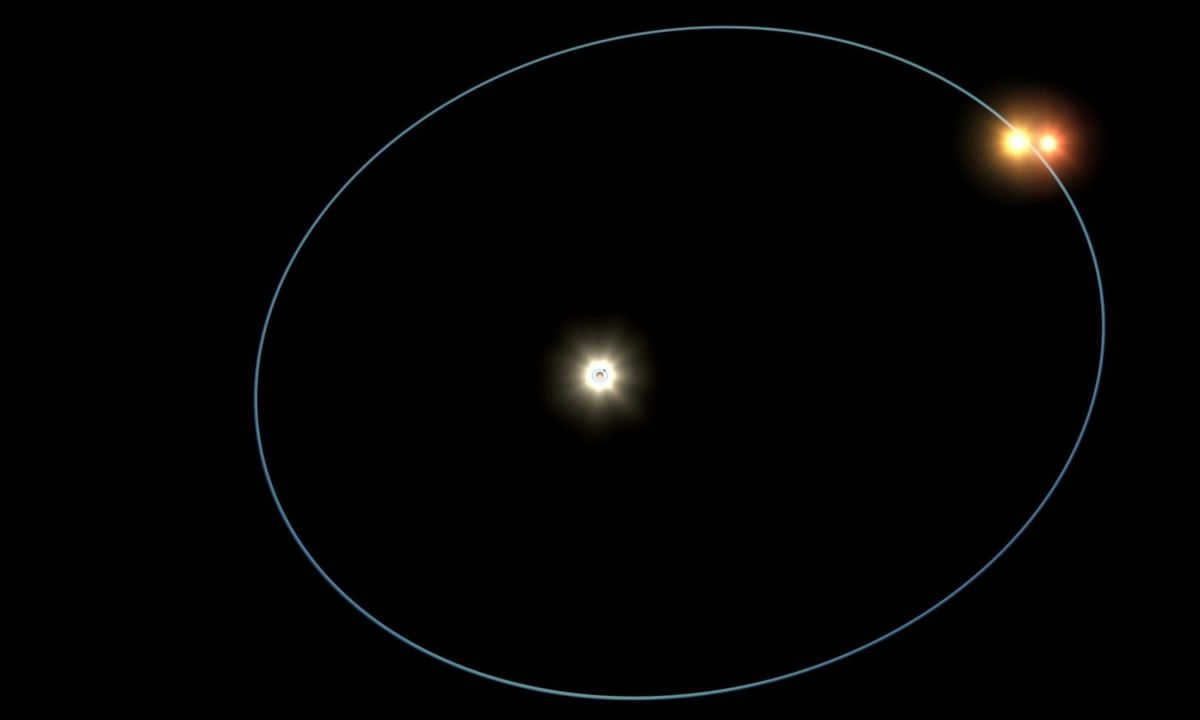
New observations are challenging the traditional understanding of gravity, as established by Newton and Einstein. Professor Kyu-Hyun Chae has analyzed data from the Gaia Space Observatory, focusing on the movement of numerous binary stars. Surprisingly, his findings contradict well-established gravitational theories, including those related to dark matter and dark energy. If these results are verified, they could potentially revolutionize our understanding of the forces that shape the Universe.
For centuries, gravity has been regarded as the fundamental force that governs the motion of celestial bodies. However, with the advent of space telescopes and advanced technology, our conventional beliefs are being put to the test.
A recent research conducted by Prof. Kyu-Hyun Chae from Sejong University has presented a challenge to our current understanding of gravity. Through the analysis of the orbital movements of 26,500 large binary stars, using data obtained from the Gaia space observatory of the European Space Agency, Chae has discovered anomalies that deviate from the expected patterns. These anomalies indicate that the laws of gravity proposed by Newton and Einstein might not be applicable in situations with low accelerations.
These groundbreaking findings have the potential to reshape our comprehension of the forces that shape the universe and could potentially validate a new theory of gravity. The study has been published in The Astrophysical Journal.
Challenging Established Theories: The Phenomenon of Binary Stars
Binary stars, which are characterized by two stars orbiting around each other, have recently posed a remarkable challenge to existing scientific theories. In his research, Chae made an intriguing observation: when these binary stars experience low levels of acceleration, their behavior deviates significantly from what current models predict. Surprisingly, their acceleration is found to be approximately 30-40% greater than what is anticipated based on Einstein’s general theory of relativity and Newton’s law of gravity.
This discrepancy in the observed acceleration of binary stars suggests that our current understanding of these celestial systems may be incomplete and inaccurate in certain specific conditions of low acceleration. It raises the possibility that there are yet unknown factors or forces at play, which are not accounted for in the existing theories.
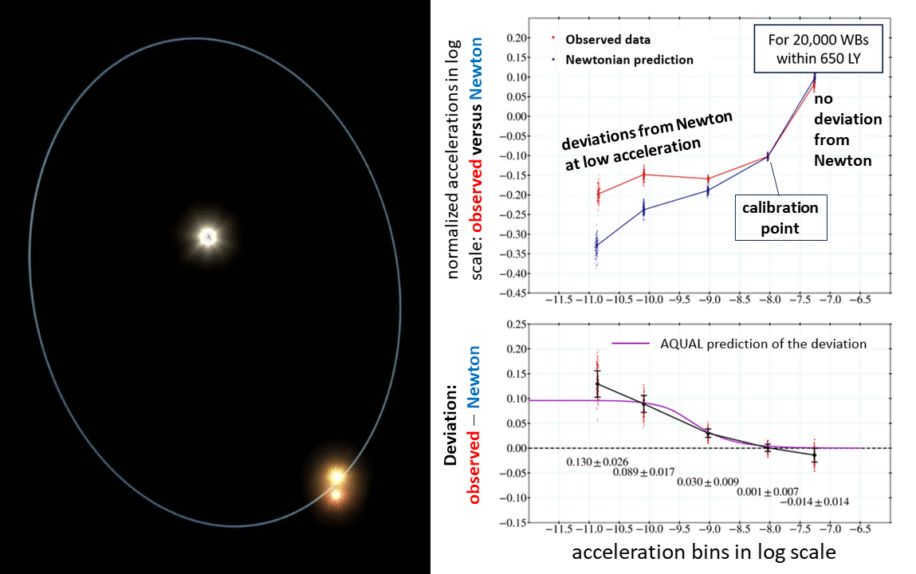
Nevertheless, this irregularity is not always visible. When accelerations surpass 10 nm/s², binary stars adhere precisely to the expectations set forth by Newton’s and Einstein’s theories. Consequently, these findings conform to the conventional forecasts under higher accelerations, but expose notable deviations under lower accelerations. This duality gives rise to pivotal inquiries regarding the essence of gravity and our comprehension of it.
MOND theory, or an alternative to dark matter
In a groundbreaking move four decades ago, Mordechai Milgrom presented a revolutionary idea that sent shockwaves through the world of theoretical physics. He addressed the perplexing anomalies observed in the movement of galaxies, which defied the predictions based on our current understanding of gravity. Rather than resorting to the concept of hidden dark matter to account for these anomalies, Milgrom proposed a different perspective. He argued that it was necessary to reevaluate our comprehension of gravity itself.
His hypothesis, called modified Newtonian dynamics (MOND), proposes that Newton’s theory of gravity, which is effective at normal scales, might require adjustments at extremely low accelerations, like the ones seen in the outer regions of galaxies. Instead of attributing the rotation curves of galaxies to the existence of dark matter, MOND suggests that gravity itself might exhibit different behavior under such low accelerations.
AQUAL, an alternative theory of gravity
In addition to the MOND theory, there is another theory proposed to explain the observed gravitational anomalies at low accelerations: the AQUAL theory. The term “AQUAL” stands for “A QUAdratic Lagrangian”, indicating that it is based on a specific mathematical formulation of gravity. This theory was jointly developed by Mordechai Milgrom, the same physicist behind MOND, and Jacob Bekenstein, a renowned physicist who passed away in 2015.
The AQUAL theory aims to establish a more fundamental foundation for Modified Newtonian Dynamics (MOND). It alters the mathematical description of gravity, particularly at small accelerations. The fundamental concept is that the gravitational force may not adhere to the conventional laws of Newton or Einstein when objects are in slow motion.
Implications for cosmology
If Che’s observations, once verified by the scientific community, are indeed true, it could have significant ramifications for our comprehension of the cosmos. At present, Einstein’s general theory of relativity serves as the bedrock of our understanding of gravity, elucidating how masses bend space-time around themselves. However, if the anomalies detected at low accelerations, as detailed by MOND, are proven correct, it would suggest that the general theory of relativity is inadequate or inaccurate under specific circumstances.
Such confirmation would necessitate the development of a new theory that encompasses both general relativity and the phenomena expounded by MOND. This expanded theory would need to account for the observed motions without having to rely on concepts like dark matter or dark energy.
Presently, our cosmological model incorporates dark matter and dark energy as vital components. In the official statement, Milgrom acknowledges: “Chae’s finding is the outcome of an extremely advanced examination of cutting-edge data. However, for a discovery of such profound significance – and it truly is profound – we require the validation of autonomous analysis, ideally utilizing superior forthcoming data”.
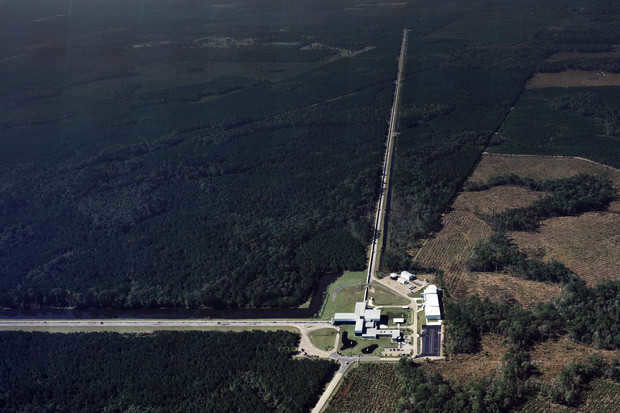
The LIGO Livingston Observatory is the place where the theory of gravity was discovered.
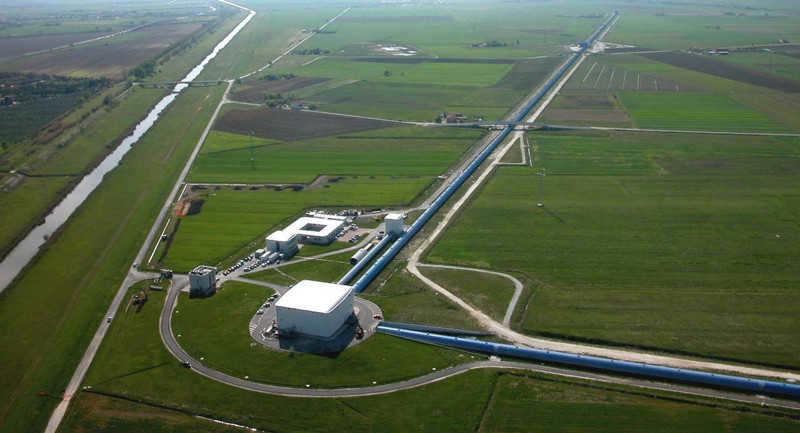
Impacts of gravity
Gravity Theories
Today, there are more than a dozen different theories of gravity known to scientists. These theories can be categorized into classical and alternative theories. One of the most well-known classical theories is Isaac Newton’s theory of gravity, which was developed by the renowned British physicist in 1666. According to this theory, a massive object in mechanics creates a gravitational field around itself, attracting smaller objects towards it. Similarly, these smaller objects also have their own gravitational fields, just like any other material objects in the universe.
Another widely recognized theory of gravity was formulated by the world-famous German scientist, Albert Einstein, in the early 20th century. Einstein was able to provide a more precise description of gravity as a phenomenon and explain its effects not only in classical mechanics but also in the quantum world. His general theory of relativity explains how a force like gravity can influence the space-time continuum and the trajectory of elementary particles in space.
Gravity Map of Earth
When it comes to different theories of gravity, one theory that stands out is the relativistic theory, which was developed by the renowned physicist A.A. Logunov from our country. Unlike Einstein’s theory, Logunov argued that gravity is not purely geometric, but a tangible and powerful physical force field. In addition to the relativistic theory, there are also other alternative theories of gravity, such as scalar, bimetric, quasi-linear, and more.
The force of gravity, also known as gravitation or universal gravitation, is the underlying force that governs the behavior of the entire Universe.
This information was sourced from spacegid.com and wikipedia.ru.
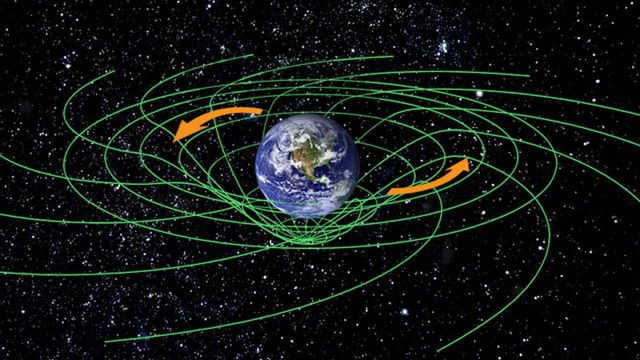
Even though gravity is the least powerful force between objects in the entire Universe, its significance in the fields of physics and astronomy cannot be overstated. This is due to its ability to exert an influence on physical entities regardless of the distance between them in space.
Basic Facts
If you have an interest in the field of astronomy, chances are you have pondered the concept of gravity and the law of universal gravitation. Gravity is a fundamental force that exists between all objects in the universe.
Additional Resources
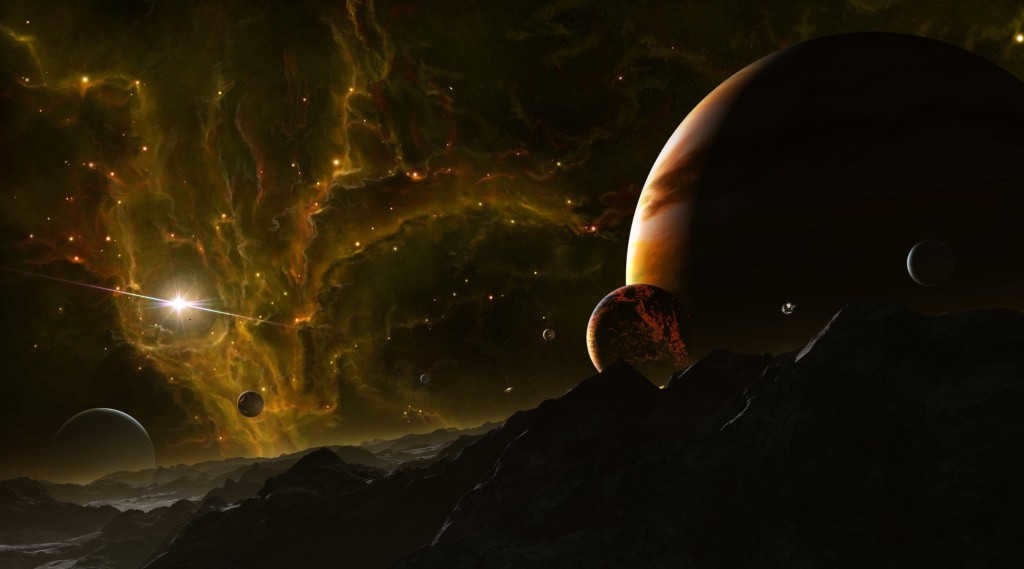
The credit for discovering the law of gravity is given to the renowned English physicist, Isaac Newton. Most of us are familiar with the anecdote of the apple falling on the head of this esteemed scientist. However, delving into history reveals that the concept of gravity was contemplated long before Newton’s time by ancient philosophers and scientists like Epicurus. Nonetheless, it was Newton who first formulated the gravitational interaction between physical objects within the framework of classical mechanics. His theory was further developed by another eminent scientist, Albert Einstein, who, in his general theory of relativity, provided a more precise depiction of the influence of gravity in space and its role in the space-time continuum.
According to Newton’s law of universal gravitation, the force of attraction between two masses separated by a distance is inversely proportional to the square of the distance and directly proportional to the masses. The gravitational force is a long-range force, meaning that the gravitational potential of a body is determined solely by its position in classical mechanics. The gravitational field of an object is stronger if it has a larger mass, resulting in a more powerful gravitational force. This is why cosmic objects like galaxies, stars, and planets have such strong gravitational fields.
Gravity fields
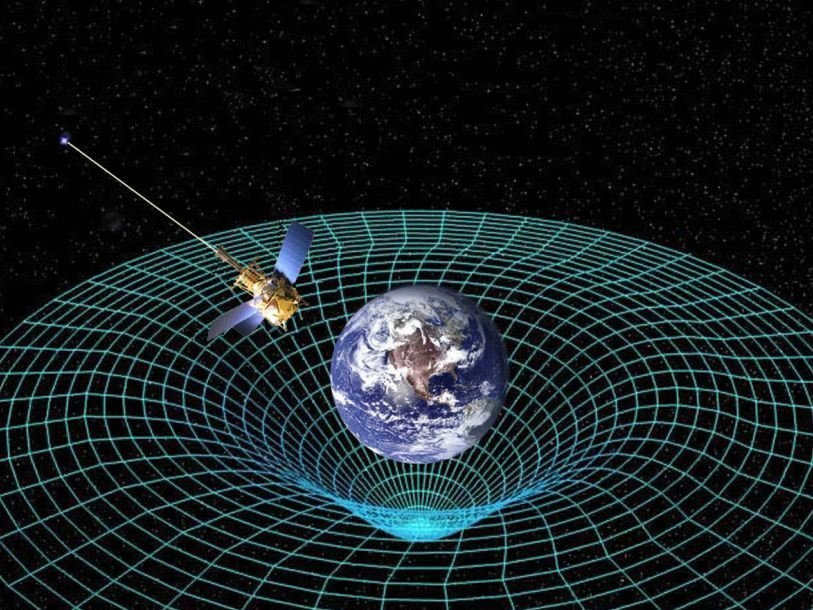
The gravitational field of Earth is the region in which gravitational interaction occurs between objects in the universe. The strength of the gravitational field is determined by the mass of an object, with larger masses producing a stronger field and a greater impact on surrounding physical bodies. The gravitational field itself is considered a potential field, meaning that the potential energy of attraction between two bodies remains constant even if the bodies are moved along a closed loop. This principle gives rise to the well-known law of conservation of the sum of potential and kinetic energy in a closed loop.
In the realm of matter, the gravitational field holds immense significance. It is a property possessed by all material entities in the vast expanse of the Universe that possess mass. This force of gravity has the power to not only impact matter, but also energy. It is through the influence of gravitational fields emanating from colossal cosmic entities like black holes, quasars, and supermassive stars that the formation of solar systems, galaxies, and other celestial clusters with a coherent structure takes place.
Recent scientific findings have unveiled that the well-known phenomenon of the Universe’s expansion is also rooted in the principles of gravitational interaction. Specifically, the expansion of the Universe is facilitated by the mighty gravitational fields generated by both minuscule and gargantuan objects.
Gravitational waves: a unique phenomenon
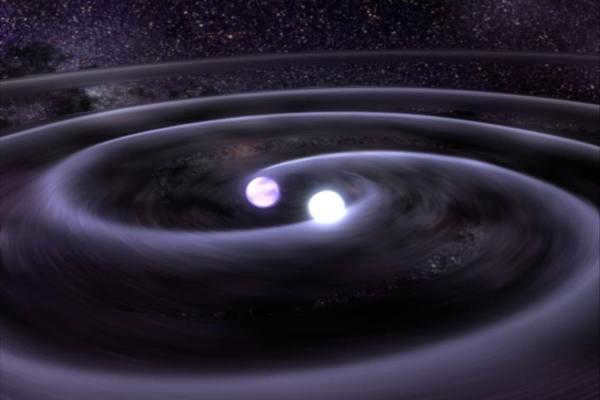
Gravitational radiation in a binary system
Gravitational radiation, also known as gravitational waves, was originally coined by the renowned physicist Albert Einstein. In the realm of gravitation theory, gravitational radiation is produced when material objects undergo varying acceleration. As the object accelerates, the gravitational wave seemingly “detaches” from it, resulting in fluctuations in the gravitational field throughout the surrounding space. This phenomenon is referred to as the gravitational wave effect.
Despite being predicted by Einstein’s general theory of relativity, as well as other theories of gravitation, gravitational waves have never been directly detected. The primary reason for this is their incredibly small size. However, there is indirect evidence in astronomy that can support this phenomenon. One such example is the observation of the gravitational wave effect on the convergence of binary stars. Observations have shown that the rate of convergence of binary stars is influenced, to some extent, by the loss of energy from these celestial objects, which is likely attributed to gravitational radiation. The upcoming use of the next generation of telescopes, Advanced LIGO and VIRGO, will provide scientists with the means to definitively confirm this hypothesis.
Fascinating Impacts of Gravity
Resources on the Subject

There are two concepts of mechanics in modern physics: classical mechanics and quantum mechanics. Quantum mechanics, which was derived relatively recently, is fundamentally distinct from classical mechanics. In quantum mechanics, objects (quanta) do not have definite positions and velocities; everything is based on probability. This means that an object can be in a certain place in space at a certain point in time. However, it is not possible to reliably determine where it will move to next, only with a high degree of probability.
One fascinating consequence of gravity is its ability to distort the fabric of space-time. According to Einstein’s theory, the presence of a concentration of energy or any material object causes space-time to curve. As a result, the path of particles affected by the gravitational field of such an object is altered, enabling the prediction of their motion trajectory with a significant level of certainty.
Theories of gravity
In the present day, researchers have knowledge of over twelve distinct theories concerning gravity. These theories can be categorized into classical and alternative theories. The most renowned example of a classical theory is Isaac Newton’s theory of gravity, which was formulated by the esteemed British physicist in the year 1666. Its fundamental principle is that a sizable object in the field of mechanics generates a gravitational field surrounding it, which draws smaller objects towards itself. Conversely, these smaller objects also possess a gravitational field, akin to all other material entities in the cosmos.
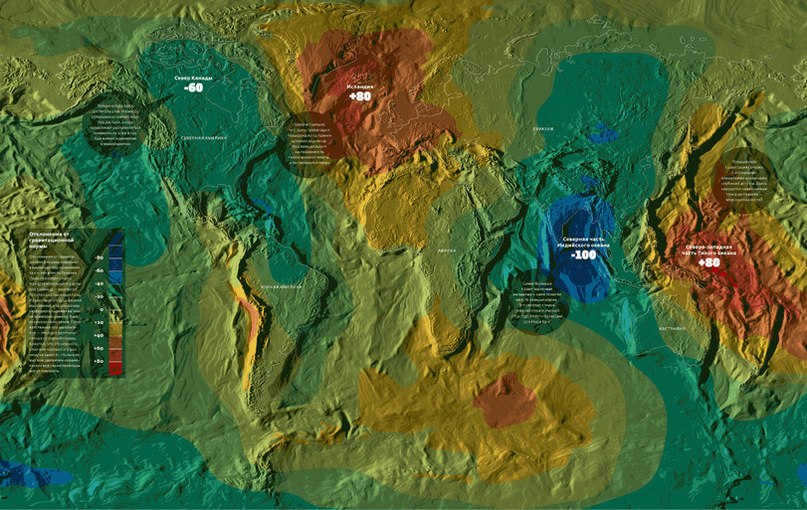
The Earth’s most precise gravity map has been revealed.
Out of the various alternative theories of gravitation, the one proposed by our compatriot, the renowned physicist A.A. Logunov, deserves significant consideration. In contrast to Einstein’s viewpoint, Logunov argued that gravity is not merely a geometric phenomenon, but rather a genuine and potent physical force field. Additionally, there are other alternative theories of gravity, such as scalar, bimetric, quasi-linear, and numerous others.
Interesting facts
- When people return to Earth after being in space, they often find it challenging to adjust to the strong gravitational pull of our planet. This adjustment period can sometimes last for several weeks.
- Studies have shown that the human body can lose up to 1% of its bone mass per month in a weightless environment.
- Mars has the lowest gravitational force of all the planets in our Solar System, while Jupiter has the highest.
- The salmonella bacteria, known for causing intestinal diseases, become more active in weightlessness and can pose greater risks to the human body.
- Black holes, which are among the most fascinating objects in the Universe, possess the strongest gravitational force. Even a black hole the size of a golf ball can exert the same gravitational force as our entire planet.
- The gravitational force experienced on Earth varies across different locations on our planet. One such example is the Hudson Bay region of Canada, where the force is comparatively lower than in other areas around the world.

